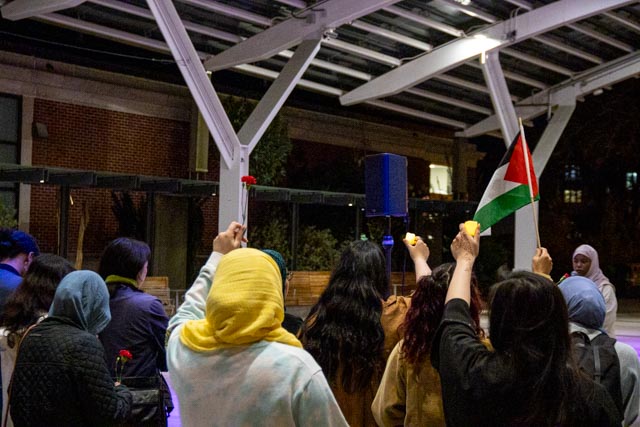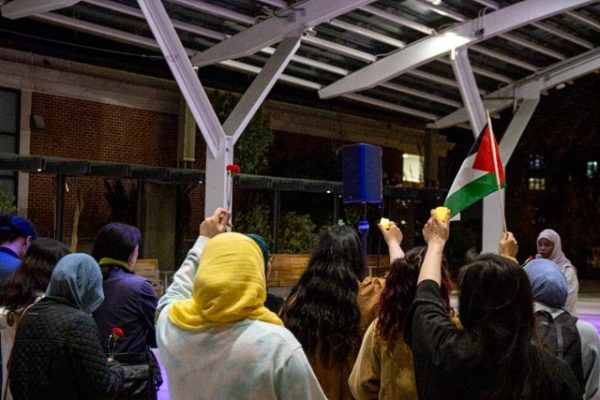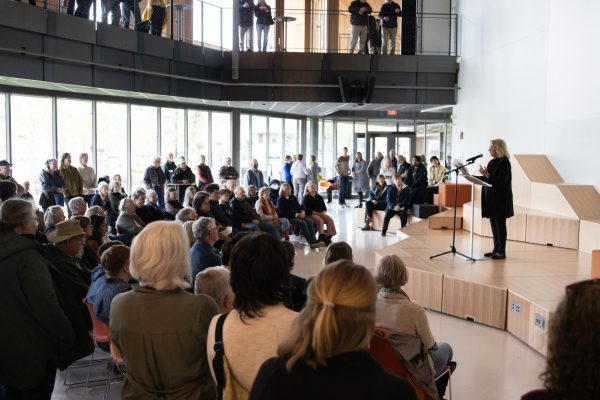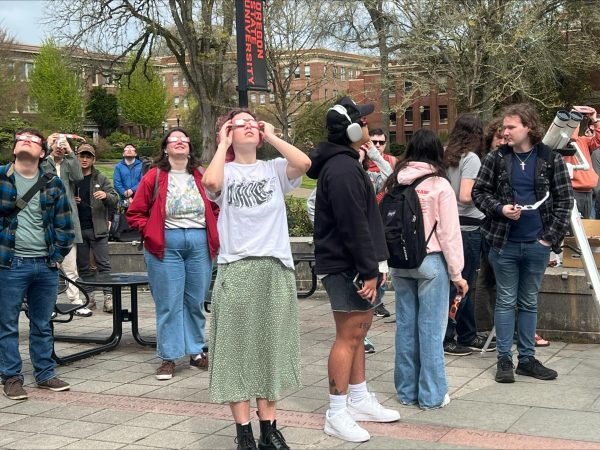Student Fee Committee suggests decrease in student fees for Athletics, Joint Session deliberates
January 16, 2020
The Associated Students of OSU Congress Joint Session was held in the MU Ballroom at 6 p.m. on Jan. 8, 2020, where the Student Fee Committee report was presented and discussed.
As OSU’s student government organization, ASOSU votes whether to pass on student fee recommendations to the ASOSU president or send them back to mediation with a special mediation committee. Tuition, health fees and building fees are decided separately by Oregon State University.
The Jan. 8 meeting was the latest in the process that determines student incidental fees for the 2020-21 school year and involved the House and Senate meeting to evaluate and consider the Student Fee Committee’s recommended student fees for the upcoming year.
The Student Fee Committee, represented by SFC chair Safi Ahmad, explained their recommendations in a report compiled during a year-long research project of the eight student fee units and contingency, bad debt and facility improvement fees. The SFC recommendations were supported by four pillars: meeting basic needs, embodying integrity, prioritizing wellness and increasing access. A 3% decrease in enrollment was factored into their decisions.
The recommended fees for three student-fee funded units, including the Family Resource Center, ASOSU and Athletics, were discussed in particular depth.
The Family Resource Center, provides child care assistance funds, on-campus childcare, lactation rooms and education. A 22.84% increase in funding was recommended for FRC, and a resolution to propose funding to expand the capacity of the Azalea House was suggested but was decided to be outside the scope of the meeting.
Lauri Lutes, a Ph.D. candidate in botany and plant pathology at OSU, spoke in agreement with the SFC’s recommended fee increase. Lutes said that she decided to come to OSU over other graduate schools because of its resources for student parents, and thanked the SFC for “acknowledging that childcare is a basic need.”
For the ASOSU fee unit, a fee change was suggested from $23.14 to $24.57 per student in fall, winter and spring terms, an increase of 6.18%. Several representatives of SafeRide, a transportation service provided by the student government, encouraged representatives to vote against the suggested fee because it was not a significant enough increase to meet the program’s needs.
Trenton Joiner, director of Diversity Initiatives and Student Advisory Board Chair, advocated for the decision to go into mediation. “SafeRide is one of the things that sets OSU apart,” Joiner said. “If this budget passes as is, OSU will not be able to run SafeRide as it is now.”
Uwe Keist, the program manager for SafeRide, said that in their seven years of operation, “we’ve only been seeing increases in services and the people who rely on them,” and encouraged representatives to “consider their values” before voting.
For the Athletics fee unit, the SFC recommended a decrease in student fees from $40.71 per student to $36.90 per student in fall, winter and spring terms. This decrease was three times larger than last year. The current budget for Athletics at OSU is $84 million, and $2.6 million of that amount was funded through student fees this year.
Haley Ramsey, Athletics liaison for the Student Fee Committee, said that she feels that Athletics add value to the school, and advocated that representatives vote against the suggestion and return to mediation. Ramsey said that the decision to decrease fees toward Athletics had not been unanimous within the SFC. Initially, a proposal for a 3% increase for all fee units to account for inflation and decreased enrollment had failed before the suggested decrease passed six to five, with one abstained.
Senator Brendan Lefranc spoke in favor of the suggested decrease in student fees for Athletics, in order to alleviate the financial burden on the student body.
“There are students sleeping in their cars, there are students going hungry, students wondering if they should go to school or stay home to help their sick kid, or go to school at all. Athletics are important, but they’re not the most important thing,” Lefranc said.
The discussion on student fees went over its allotted time and a movement was made to continue the discussion period, but failed by a vote in the House, despite several more people waiting to make a statement.
Senator Michael Haffner directed a statement toward student representatives in favor of continuing the discussion over Athletics funding before the issue was voted on.
“Student fee approval is the most power granted to any student on campus. If you don’t owe it to yourself, you owe it to the 1,200 students you represent to discuss these things in their entirety,” Haffner said.
Haffner used the number 1,200 based on the approximate enrollment of 32 thousand students, divided between the 25 House representatives.
According to Safi Ahmad, Student Fee Committee chair, incidental fees for the 2020-21 school year will be sent to the Office of Budget and Fiscal Planning and the OSU President by March 1 at the latest. Fees will be enacted starting Fall 2020.


























































































































